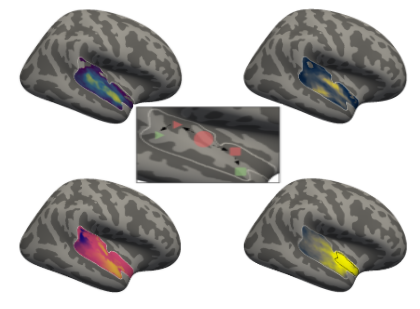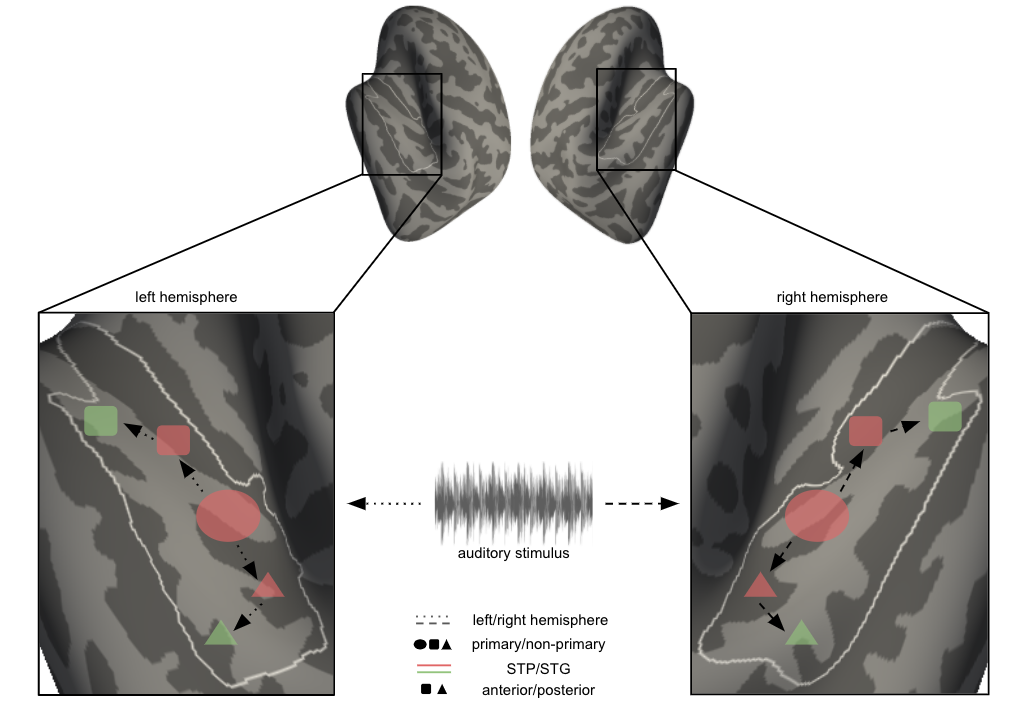
Welcome¶
Within these pages we would like to provide a (interactive) walkthrough of our
publication “Investigating the functional principles of the auditory cortex using
multivariate, connectivity and meta-analyses” (please check the paper and
the preprint). This walkthrough will outline the applied analyses steps
and methods in more detail, including the used code and where possible results
which can be rerun an interactive manner. You can navigate through the
respective sections via the TOC on the left side and within sections via the TOC
on the right side. The three symbols in the top allow to enable full screen mode,
link to the underlying Github repository and allow you to download the walkthrough
as a pdf or jupyter notebook respectively. Some sections will additionally
have a little rocket in that row which will allow you to interactively rerun
certain analyses via cloud computing. Additionally, we support public reviews and
comments through an hypothes.is plugin with which you can interact on the right
side. All of this awesomeness (talking about the infrastructure and resource) is
possible through the dedicated and second to none work of the Jupyter community,
specifically, the Executable/Jupyter Book and mybinder project.
Functional principles of the auditory cortex¶
If the human auditory cortex (AC) is one thing besides amazing, it’s wild. Compared to other (primary sensory) brain regions it’s localization and parcellation is less understood and reliable. Not to mention inter individual differences in struture and function. However, within all this crazyness, there appear to be certain aspects that seemingly govern the processing of sound within the AC. More precisely, there are apparent functional principles that govern the AC. This entails a distinction between the left and the right hemisphere, primary and non-primary regions, the superior temporal plane and the superior temporal gyrus, as well as anterior and posterior regions. Figure 1 provides a graphical summary of these proposed functional principles.

Fig. 1 A graphical representation of functional principles of the AC.¶
Seeking to understand this fascinating characteristic of the AC in more detail and address some raised concers, we conducted a comprehensive assessment by applying a versatile complementary set of analysis approaches. This walkthrough will guide you through these, providing as much information as possible.
Feedback & Questions¶
We would highly appreciate and value every feedback, idea or question you might have. Please don’t hesitate a single second to get in touch with us. We would of course prefer if you would use the public comment function via the hypothes.is plugin (on the right side), but depending on your inquiry opening an issue in the GitHub repository or sending an email (herholz dot peer at gmail com) is also fine.
Thanks and Acknowledgment¶
We would like to thank the Jupyter community, specifically, the Executable/Jupyter Book and mybinder project for enabling us to create this walkthrough. Furthermore, we are grateful for the entire open neuroscience community and the amazing support and resources it provides. This includes the community driven development of data and processing standards, as well as unbelievable amount of software packages that made this project possible. We would additionally like thank Omer Faruk Gulban, Elizabeth DuPre and Jerome Dockes for tremendously helpful discussions and pointers for various aspects of this project. Our deepest gratitude also goes to the funding agencies that through their trust and financial support enabled this study. This includes …
